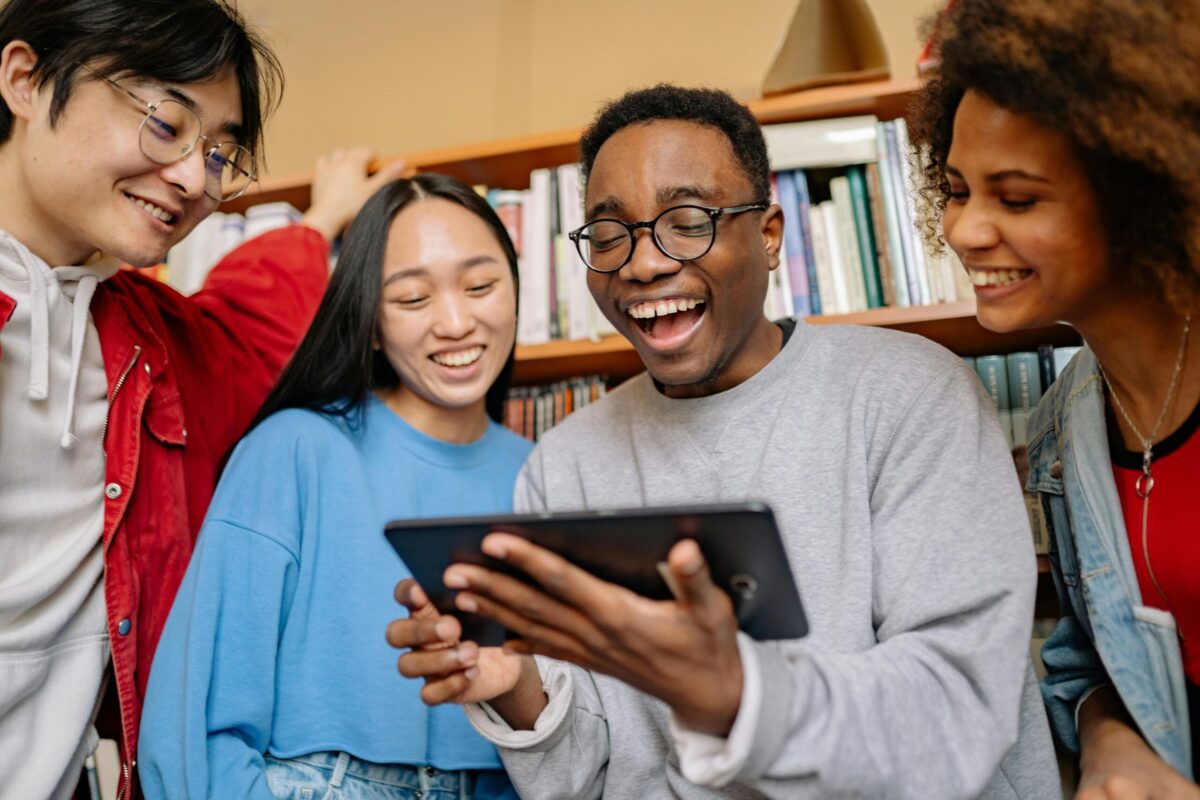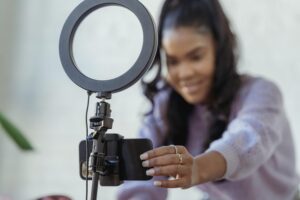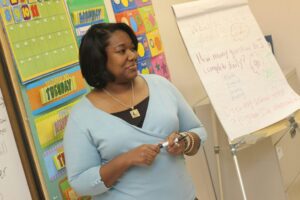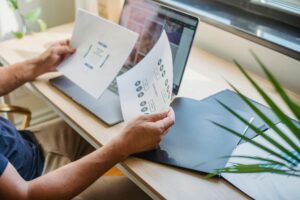Project Based Learning (PBL) is a teaching method that engages students in learning by solving real-world problems or creating meaningful products. PBL allows students to develop 21st century skills such as collaboration, communication, creativity, and critical thinking. PBL also fosters student autonomy, motivation, and ownership of their learning.
Here are some examples of project based learning prompts for high school students in grades 9-12; they organized by grade level and subject area. Each example includes a driving question, a brief description, and some possible outcomes or products.
Grade 9: Language Arts
How can we write and perform a slam poem about a social issue?
Students learn about the features and techniques of slam poetry, a form of spoken word poetry that expresses personal or social commentary. They choose a social issue that they care about or are affected by, such as racism, sexism, bullying, climate change, etc. They research the issue and gather facts, statistics, and personal stories. They write their own slam poems, using various literary devices and rhetorical strategies. They practice and perform their poems in front of their classmates or other audiences.
Possible outcomes/products: Slam poems; research notes or sources; performances; feedback or evaluations.
Grade 9: Math
How can we create and analyze a budget for a trip or an event?
Students learn about the concepts and methods of financial literacy and data analysis through creating and analyzing a budget for a trip or an event. They choose a trip or an event that they want to plan, such as a vacation, a party, a concert, etc. They research the costs and revenues of their trip or event, such as transportation, accommodation, food, tickets, etc. They create a budget, using spreadsheet software or tools. They analyze and optimize their budget, using formulas, functions, charts, etc. They communicate their findings and recommendations in a report and a presentation.
Possible outcomes/products: Budget; spreadsheet; analysis or optimization reports; presentations; feedback or suggestions.
Grade 9: Science
How can we create and test a wind turbine?
Students learn about the science and engineering of wind energy and electricity through creating and testing a wind turbine. They research different types of wind turbines and how they convert wind into electricity. They design and build their own wind turbine, using recycled or low-cost materials. They test and improve their wind turbine, following the safety and ethical guidelines. They use their wind turbine to power a device or a load, such as a light bulb, a fan, etc. They collect and compare data on their wind turbine’s performance, such as voltage, current, power, etc.
Possible outcomes/products: Wind turbine; device or load; data tables or graphs; analysis or improvement reports; presentations or videos to demonstrate and explain their wind turbine.
Grade 9: Social Studies
How can we create a podcast about a historical event or figure?
Students learn about various historical events or figures that are relevant to their curriculum or interests. They research their chosen topic using primary and secondary sources and evaluate their credibility and reliability. They create a podcast script that includes an introduction, a main body, and a conclusion, as well as a bibliography. They record and edit their podcast using audio editing software or tools. They publish their podcast online and share it with their classmates or other audiences.
Possible outcomes/products: Podcasts; scripts; bibliographies; online publications; feedback or comments.
Grade 10: Language Arts
How can we write and publish our own magazine articles?
Students learn about the features and styles of magazine writing through writing and publishing their own magazine articles. They choose a genre and a topic for their articles, such as news, opinion, feature, etc. They research their topic using reliable and varied sources and cite them properly. They write their articles, using appropriate language, tone, and structure. They edit and revise their articles, using peer feedback and rubrics. They publish their articles online or print them out. They share their articles with their classmates or other readers.
Possible outcomes/products: Magazine articles; online or print publications; feedback or evaluations.
Grade 10: Language Arts
How can we write and publish our own poetry?
Students learn about the features and styles of poetry writing through writing and publishing their own poetry. They choose a genre and a theme for their poetry, such as sonnet, haiku, free verse, etc. They write their poems, using various literary devices and techniques. They edit and revise their poems, using peer feedback and rubrics. They publish their poems online or print them out. They share their poems with their classmates or other readers.
Possible outcomes/products: Poems; online or print publications; feedback or evaluations.
Grade 10: Social Studies
How can we create a blog about a social movement or a cause?
Students learn about the skills and techniques of blogging and activism through creating a blog about a social movement or a cause. They choose a social movement or a cause that they care about or are affected by, such as Black Lives Matter, LGBTQ+ rights, animal welfare, etc. They research their topic using credible and diverse sources and evaluate their perspectives and biases. They create a blog proposal that includes a title, a purpose, an audience, and a plan. They write and post their blog entries, using persuasive and informative language. They publish their blog online and share it with their classmates or other audiences.
Possible outcomes/products: Blogs; proposals; online publications; feedback or comments.
Grade 10: Social Studies
How can we create a documentary about a current issue or event?
Students learn about the skills and techniques of documentary film making through creating a documentary about a current issue or event. They choose a topic that is relevant or interesting to them and their peers, such as immigration, climate change, social justice, etc. They research their topic using credible and diverse sources and evaluate their perspectives and biases. They create a documentary proposal that includes a thesis, a purpose, an audience, and a plan. They film and edit their documentary using video editing software or tools. They publish their documentary online and share it with their classmates or other audiences.
Possible outcomes/products: Documentaries; proposals; online publications; feedback or comments.
Grade 11: Language Arts
How can we write and publish our own short stories?
Students learn about the elements and genres of fiction writing through writing and publishing their own short stories. They choose a genre and a theme for their short stories, such as horror, romance, mystery, etc. They write their short stories, following the steps of the writing process. They edit and revise their short stories, using peer feedback and rubrics. They publish their short stories online or print them out. They share their short stories with their classmates or other readers.
Possible outcomes/products: Short stories; online or print publications; feedback or evaluations.
Grade 11: Language Arts
How can we write and publish our own essays?
Students learn about the features and styles of essay writing through writing and publishing their own essays. They choose a genre and a topic for their essays, such as argumentative, persuasive, informative, etc. They write their essays, following the steps of the writing process. They edit and revise their essays, using peer feedback and rubrics. They publish their essays online or print them out. They share their essays with their classmates or other readers.
Possible outcomes/products: Essays; online or print publications; feedback or evaluations.
Grade 11: Social Studies
How can we create a campaign for a social issue or a cause?
Students learn about the skills and techniques of campaigning and advocacy through creating a campaign for a social issue or a cause. They choose a social issue or a cause that they care about or are affected by, such as gun control, mental health, homelessness, etc. They research their topic using credible and diverse sources and evaluate their perspectives and biases. They create a campaign proposal that includes a goal, a target audience, a message, and a strategy. They create and distribute their campaign materials, such as posters, flyers, videos, social media posts, etc. They measure and evaluate the impact and effectiveness of their campaign, using data and feedback.
Possible outcomes/products: Campaign; proposal; campaign materials; data or feedback; impact or effectiveness reports.
Grade 11: Social Studies
How can we create a mock trial based on a historical or current case?
Students learn about the skills and procedures of law and justice through creating a mock trial based on a historical or current case. They choose a case that is relevant or interesting to them and their peers, such as the Salem witch trials, the Scopes trial, the O.J. Simpson trial, etc. They research the facts, evidence, and arguments of the case and evaluate their credibility and reliability. They create a mock trial script that includes the roles, statements, and questions of the judge, jury, lawyers, witnesses, etc. They practice and perform their mock trial in front of their classmates or other audiences.
Possible outcomes/products: Mock trial; script; research notes or sources; performances; feedback or evaluations.
Grade 12: Math
How can we create and analyze a survey about a topic of our choice?
Students learn about the concepts and methods of statistics and data analysis through creating and analyzing a survey about a topic of their choice. They choose a topic that is relevant or interesting to them and their peers, such as social media, sports, music, etc. They formulate a research question and design a survey, following the principles of good survey design. They administer the survey to a sample of their classmates or other students. They collect and organize the data and perform descriptive and inferential statistics. They interpret and visualize the data and answer their research question. They communicate their findings and recommendations in a report and a presentation.
Possible outcomes/products: Surveys; data sets; statistics; interpretations or visualizations; reports; presentations; feedback or suggestions.
Grade 12: Science
How can we create a science fair project that solves a real-world problem?
Students learn about the scientific method and the engineering design process through creating a science fair project that solves a real-world problem. They identify a problem that they are interested in or passionate about, such as water quality, air pollution, renewable energy, etc. They formulate a question or a hypothesis and conduct background research. They design and conduct an experiment or a prototype, following the ethical and safety guidelines. They collect and analyze data and draw conclusions. They communicate their results and implications in a report and a presentation.
Possible outcomes/products: Science fair projects; experiments or prototypes; data tables or graphs; reports; presentations; feedback or awards.
By integrating the project-based learning (PBL) examples provided—or adapting them to better suit your needs—you can empower students to actively engage with real-world challenges and complex inquiries. This approach not only facilitates knowledge acquisition but also cultivates vital life skills, including problem-solving, critical thinking, and collaboration.
Through PBL, we can create an environment where learning is synonymous with discovery, and education is a collaborative journey towards a more informed and capable generation.







